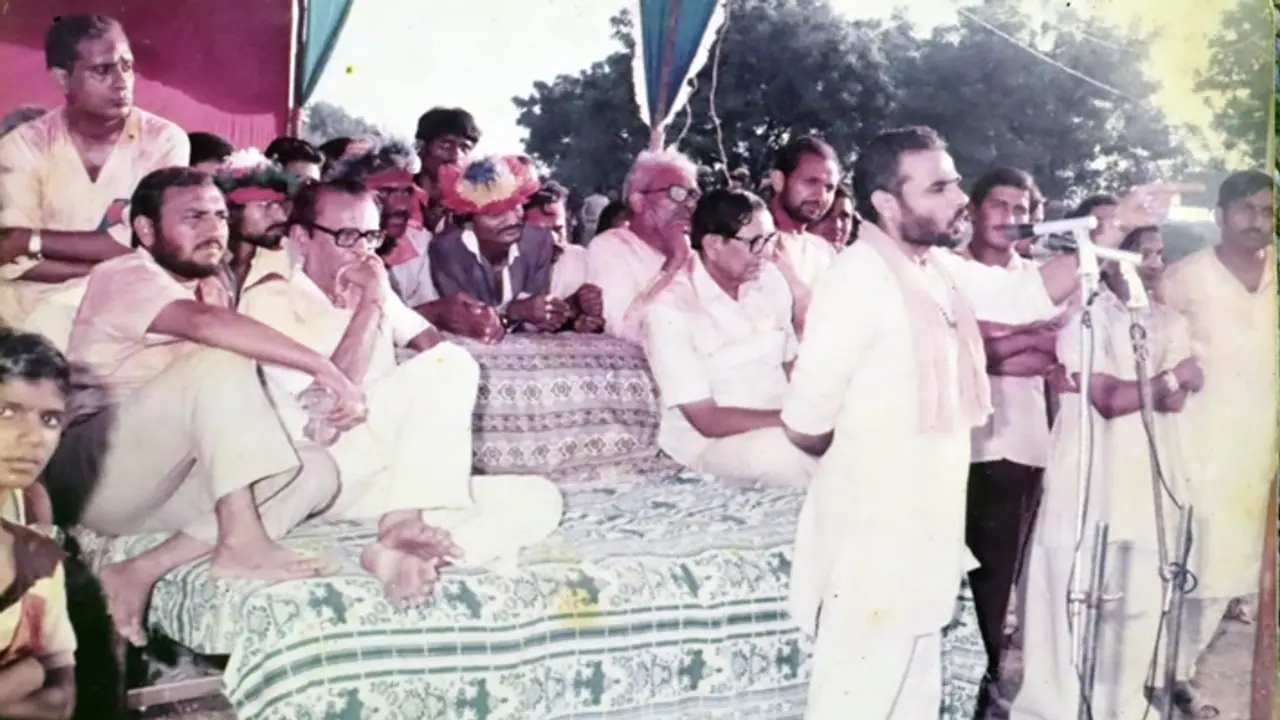As India celebrates Janmashtami 2024, the story of how a young Narendra Modi intervened to prevent communal violence in 1984 was widely shared on social media platform X as a poignant reminder of the power of unity and leadership.
As India celebrates Janmashtami 2024, the story of how a young Narendra Modi intervened to prevent communal violence in 1984 was widely shared on social media platform X as a poignant reminder of the power of unity and leadership. In a time of rising tensions, Modi's innovative approach helped avert potential riots and restored peace in Prantij, a small town in Gujarat’s Sabarkantha district.

In 1984, Prantij was on the verge of communal unrest. Violent elements had stirred fear among the Hindu community, leading to widespread panic and displacing many families. Facing this crisis, concerned RSS workers traveled nearly a hundred kilometers to seek the guidance of Narendra Modi, who was then serving as the Vibhag Pracharak of the RSS in Ahmedabad.
Modi, known for his strategic acumen, listened to the workers’ concerns and assured them of his plan. He instructed them to return to Prantij and promised to visit soon. Upon arriving, Modi initiated a series of meetings in key localities of Prantij, namely Badi Bhagol and Nani Bhagol. These gatherings were not limited to RSS members but included leaders from various Hindu communities, social groups, spiritual organizations, and local figures. Despite the RSS’s minimal presence in Prantij, Modi sought to build a broad coalition to address the crisis.
Modi’s message was clear: the path to peace lay in unity, not violence. He proposed using Janmashtami, the festival celebrating Lord Krishna's birth, as an opportunity to showcase communal harmony. Modi’s vision was to organize a grand Janmashtami procession, or Shobha Yatra, where different segments of the Hindu community would come together in celebration.
The proposal resonated with the townspeople. Modi’s compelling speech near the local temple energized the community. He envisioned the Shobha Yatra as a grand event featuring decorated Raths (chariots) with images of Lord Krishna, accompanied by dancers and musicians. The idea quickly took off, with Modi personally overseeing preparations.
Under his meticulous supervision, the town was transformed. Vehicles, including tractors and bullock carts, were converted into ornate Raths, and a competition for the best-decorated Rath was organized. Streets were adorned with welcome gates, and elaborate arrangements were made for food and water. Modi’s attention to detail ensured that every aspect of the celebration was meticulously planned.
The Shobha Yatra saw participation from every segment of Hindu society, regardless of caste or sect. Modi aimed to make it a Jan Andolan, a mass movement, reflecting a concept he has promoted throughout his political career. On the day of the procession, Prantij was filled with thousands of people, with streets packed so tightly that movement was difficult. Decorated chariots paraded through the town, and the air was alive with bhajans, music, and dance.
The success of the Shobha Yatra had a profound impact. It transformed the atmosphere of Prantij from one of fear to one of communal unity. The violence that had threatened the town ceased without direct confrontation, and Modi’s efforts not only diffused immediate tensions but also helped expand the RSS network in the region.
As India marks Janmashtami 2024, the story of young Narendra Modi’s intervention in 1984 serves as a powerful example of how leadership and unity can overcome even the most challenging situations.
